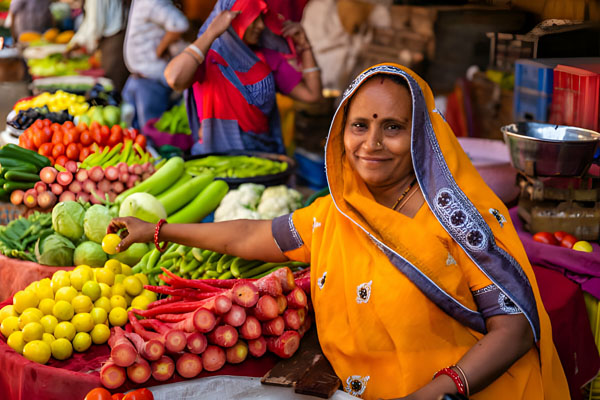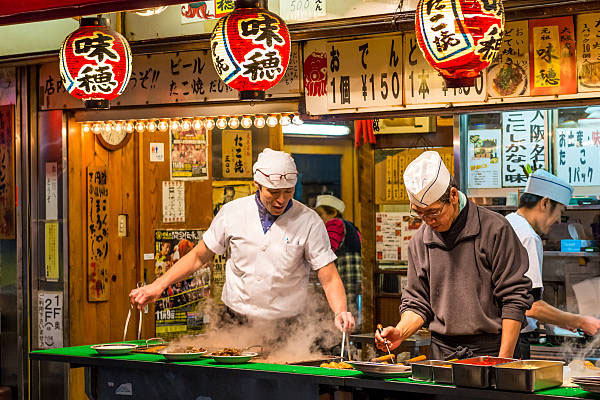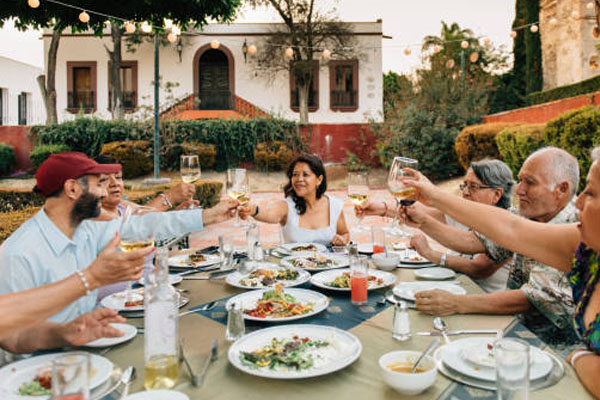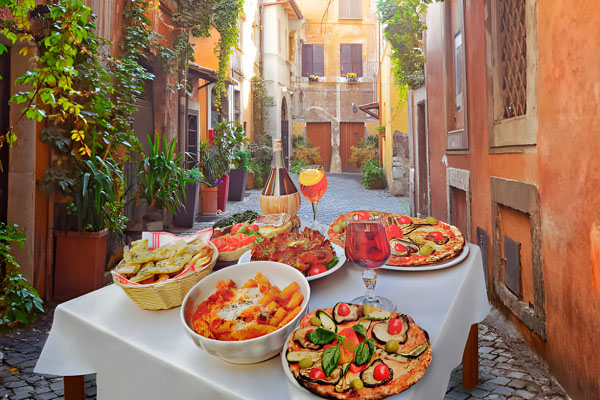Gastronomy Shapes Global Culture, weaving a rich tapestry of flavors and traditions that define the essence of a place. It’s not just about food; it’s a journey through the heart and soul of local communities, revealing stories and practices that have been passed down through generations. This exploration offers a unique lens into the cultural identity shaped by culinary influences.
Discovering How Culinary Traditions Craft Cultural Identity
The journey into gastronomy’s influence on culture begins with the local markets. Here, the vibrant colors and aromas tell a story of regional biodiversity and agricultural practices. Each stall offers more than just ingredients; they present a piece of the community’s history and values. As we explore these markets, we uncover the foundation of culinary traditions that are the cornerstone of local identities.
Transitioning from markets to kitchens, we witness the transformation of simple ingredients into complex dishes that carry the essence of a place. These recipes, often passed down through generations, are more than just instructions for preparing food. They are cultural artifacts, preserving the wisdom and creativity of ancestors. Engaging with these culinary practices, we gain insight into the social fabric that gastronomy weaves within a community.
Festivals and communal meals further highlight how gastronomy shapes culture, serving as a canvas for social interaction and collective memory. These events are not just about consuming food; they are celebrations of identity, unity, and the enduring bond between people and their land. Through these gatherings, culinary traditions become a powerful medium for expressing community values and strengthening social ties.
This exploration into the influence of gastronomy on local culture reveals a fascinating interplay between food, tradition, and identity. It’s a journey that not only tantalizes the taste buds but also enriches our understanding of the world.

Culinary Journeys: Uniting People, Traditions, and Flavors
In every corner of the world, food acts as a universal language, transcending barriers and bringing people together. It’s not merely about sustenance; it’s a celebration of life’s diverse tapestry. Through shared meals, individuals connect, sharing stories and laughter, thereby weaving a stronger social fabric. This communal aspect of dining highlights food’s pivotal role in fostering relationships and building communities.
Moreover, traditional dishes serve as a vessel for history, encapsulating the struggles, triumphs, and enduring spirit of a culture. Gastronomy shapes culture by preserving these narratives, allowing future generations to taste and appreciate their heritage. Each recipe tells a story, a blend of flavors and techniques that trace back to ancient times, offering a glimpse into the past while continuing to evolve with each new hand that prepares it.
Festivals and food-related celebrations further underscore the profound impact of gastronomy on cultural identity. These events, vibrant and full of life, showcase the rich tapestry of local traditions and culinary practices. They are a testament to the community’s pride in their heritage, inviting both locals and visitors to partake in the joyous expression of their cultural identity. Through these gatherings, gastronomy becomes a bridge, connecting diverse cultures and fostering a deeper understanding among them.
Exploring Gastronomy’s Role in Shaping Cultural Identity
Gastronomy’s influence extends beyond mere taste, embedding itself into the fabric of society. It’s a reflection of the environment, showcasing local ingredients and sustainable practices. This connection between land and table fosters a deep appreciation for nature and its bounty. As we delve into regional cuisines, we uncover a narrative of ecological stewardship, highlighting the importance of preserving our natural resources for future culinary explorations.
Furthermore, the act of cooking and eating together strengthens familial bonds, passing down traditions and skills that have been honed over centuries. In this space, the kitchen becomes a classroom, and every meal a lesson in cultural heritage. Gastronomy shapes culture by acting as a custodian of these ancestral teachings, ensuring they remain vibrant and relevant. Through this lens, food is not just nourishment; it’s a legacy.
Celebratory feasts and everyday meals alike serve as a canvas for expressing identity and community values. These gatherings, rich in tradition and flavor, are pivotal moments where gastronomy shapes culture, fostering a sense of belonging and unity. Shared experiences in savoring a culture’s essence lead to deeper appreciation of diverse culinary landscapes worldwide.
How Gastronomy Shapes Culture in Global Communities

The global culinary scene is a mosaic of flavors, each telling its own story of cultural convergence and divergence. As people migrate, they carry their culinary traditions with them, blending and adapting to new environments. This fusion creates a dynamic gastronomic landscape, where traditional dishes are reimagined, fostering innovation while respecting heritage. It’s a testament to the resilience and adaptability of cultures, united by a shared love for food.
In this context, gastronomy shapes culture by serving as a medium for cross-cultural dialogue. Food festivals and international culinary events become platforms for exchange, where chefs and food enthusiasts from around the world share knowledge and flavors. These interactions not only enrich the global food scene but also promote mutual understanding and respect among diverse cultures, highlighting the unifying power of food.
Moreover, the rise of social media and food blogging has democratized gastronomy, making it accessible to a wider audience. Through these channels, individuals share their culinary adventures and discoveries, inspiring others to explore new tastes and traditions. This digital gastronomy shapes culture by fostering a global community of food lovers, eager to learn about and experience the world’s culinary diversity.
Gastronomy Shapes Culture Through Seasonal Food Traditions
Seasonal changes play a pivotal role in shaping culinary traditions, influencing what is cooked and consumed throughout the year. This cyclical nature of food production fosters a deep connection between communities and their natural surroundings. As each season brings its own bounty, it also brings unique culinary practices that celebrate the rhythm of nature. These traditions reinforce the bond between land and table, emphasizing the importance of sustainability and local produce.
Moreover, seasonal festivals and holidays offer a window into how gastronomy shapes culture, marking the passage of time with feasts that are rich in symbolism and history. Harvest festivals and winter solstice celebrations reflect a community’s bond with its environment and culinary heritage.
As we witness these seasonal traditions passed down through generations, ‘Gastronomy shapes culture’ becomes evident, evolving while preserving its core essence. Continuity and evolution in culinary practices are a living cultural history, showing food’s ties to identity, community, and nature. Through the celebration of seasonal foods, communities not only nourish their bodies but also their cultural roots and connections to the earth.
Innovation: Where Tradition Meets Modernity
In the realm of gastronomy, the blending of traditional and modern techniques is a testament to the ever-evolving nature of culinary arts. This fusion not only honors the past but also paves the way for future innovations. Chefs and home cooks alike experiment with age-old recipes, infusing them with contemporary twists that breathe new life into classic dishes. This process enriches the culinary landscape, offering a fresh perspective on familiar flavors.
Such culinary innovation plays a crucial role in how gastronomy shapes culture, bridging the gap between generations. It demonstrates that while traditions provide a foundation, creativity and experimentation are key to cultural growth and expression. Through this lens, food becomes a dynamic form of art, reflecting the changing tastes and values of society. This evolution is celebrated in kitchens and dining tables worldwide, showcasing the diversity and adaptability of culinary traditions.
Furthermore, the integration of global ingredients and techniques into local cuisines is a reflection of our interconnected world. This cross-cultural exchange enriches local food traditions, introducing new textures, flavors, and techniques. It’s a culinary dialogue that fosters understanding and appreciation among cultures, proving that food is a universal language capable of transcending boundaries. Through this exchange, gastronomy shapes culture, illustrating the power of food to unite and inspire.
Traditions: Gastronomy’s Role in Environmental Awareness
The conversation around food is increasingly focusing on sustainability, highlighting how our culinary choices impact the planet. Gastronomy shapes culture not just through flavors and traditions, but also in promoting environmental stewardship. By choosing locally sourced and seasonal ingredients, communities can reduce their carbon footprint, support local economies, and foster a deeper connection with the land that sustains them. This approach to food underscores the importance of conscious consumption and its role in cultural preservation.
Moreover, the revival of ancient farming and cooking techniques offers insights into sustainable practices that have stood the test of time. These methods, rooted in a profound respect for nature, exemplify how gastronomy can lead the way in ecological conservation. By integrating these practices into modern culinary arts, we bridge the gap between tradition and innovation, ensuring that our food systems contribute to a healthier planet.
This shift towards sustainability in the culinary world encourages a reevaluation of food production and consumption habits globally. Gastronomy inspires a collective shift towards sustainability as individuals consider the environmental impact of their food choices. Through this lens, food transcends its role as nourishment, becoming a catalyst for change and a reflection of our commitment to preserving the earth for future generations.
Gastronomy Shapes Culture in the Digital Age
The digital age has transformed how we interact with food, making gastronomy more accessible and diverse than ever before. Online platforms have become a treasure trove of culinary knowledge, where recipes, cooking techniques, and food stories are shared across continents. This global exchange enriches local cuisines, allowing them to evolve while staying rooted in tradition. It’s a testament to the power of technology in preserving and spreading culinary heritage.
Social media, in particular, has played a pivotal role in how gastronomy shapes culture today. It has given rise to food influencers and bloggers who celebrate the art of cooking and eating, influencing food trends and preferences worldwide. They showcase global cuisine’s beauty and diversity in captivating visuals, inspiring a new generation to explore the world through flavors.
Moreover, digital platforms have facilitated the emergence of virtual cooking classes and online food festivals, breaking down geographical barriers and fostering a sense of global community. These initiatives not only democratize culinary education but also promote cultural exchange and understanding. As people from different backgrounds come together to share their culinary traditions, they contribute to a richer, more inclusive global food culture.
How Gastronomy Shapes Culture Across Generations

The ritual of passing down recipes from one generation to the next is a cherished tradition in many cultures. This act of sharing not only preserves culinary techniques but also strengthens familial bonds and cultural identity. Each recipe, with its unique blend of ingredients and flavors, tells a story of heritage, migration, and adaptation, reflecting the evolving nature of culture through the lens of food.
Moreover, these heirloom recipes serve as a tangible link to the past, offering a sense of continuity and belonging. As families gather to prepare these dishes for special occasions or everyday meals, they celebrate their history and shared memories. This communal aspect of cooking and eating underscores how gastronomy shapes culture, embedding it within the fabric of daily life and ensuring its transmission to future generations.
In this digital era, the preservation and sharing of these culinary traditions have found a new platform, reaching a wider audience than ever before. Online archives, blogs, and social media channels dedicated to food history and heritage cooking have become invaluable resources. They not only safeguard these traditions but also inspire innovation, demonstrating the dynamic interplay between tradition and modernity in the culinary world.
Celebrating Diversity: Gastronomy’s Impact on Global Unity
The global culinary landscape is a vibrant patchwork of tastes and traditions, each contributing to the rich tapestry of world culture. Food unites people across diverse backgrounds, fostering connections and celebrating differences through its universal language. This exchange of culinary traditions not only enriches individual palates but also fosters a deeper understanding and appreciation of cultural diversity.
International food fairs and multicultural festivals are prime examples of how gastronomy shapes culture by bringing people together. These events serve as a showcase for the world’s culinary diversity, offering a taste of foreign lands and traditions right at our doorstep. They encourage exploration and curiosity, breaking down barriers and building bridges between cultures through the shared experience of food.
Moreover, the fusion cuisine movement has emerged as a testament to the creative blending of culinary traditions, symbolizing the harmonious coexistence of cultures. Chefs blend diverse culinary elements to craft boundary-breaking dishes that mirror modern cultural fluidity. This culinary innovation not only delights the senses but also promotes a message of unity and inclusivity.
Conclusion
Exploring gastronomy’s cultural impact highlights food’s profound role in our global understanding and interpersonal connections. Through the shared experience of cooking and eating, we bridge cultural divides, fostering a sense of global community. This journey through the world’s kitchens uncovers not just recipes but stories, traditions, and innovations that reflect the diversity and dynamism of human culture.
Moreover, the role of gastronomy in cultural preservation and innovation highlights the importance of food in maintaining cultural identity while embracing change. Exploring and celebrating diverse culinary traditions enriches our world, fostering inclusivity and connection among communities. This celebration of culinary diversity is a testament to the power of food in connecting us, transcending language and geographical barriers.
In conclusion, the phrase “gastronomy shapes culture” encapsulates the essence of our culinary exploration. It is a reminder that food is more than sustenance; it is a medium for storytelling, education, and connection. As we move forward, let us continue to embrace the flavors of the world with open hearts and minds, recognizing the role of gastronomy in weaving the rich tapestry of human culture.

Ryan Taylor, a seasoned traveler with over a decade of experience exploring Europe’s nooks and crannies, offers a wealth of knowledge and unique insights into the continent’s diverse cultures and landscapes. His passion for travel began in his early twenties, and since then, Ryan has journeyed through numerous European countries, collecting stories, tips, and a deep understanding of each destination’s unique charm. His blog entries are not just guides but narratives enriched with personal experiences, making every recommendation and piece of advice relatable and practical for fellow travel enthusiasts. With a keen eye for hidden gems and a love for sharing his adventures, Ryan’s writings are a treasure trove for anyone seeking to discover the beauty and richness of Europe.







